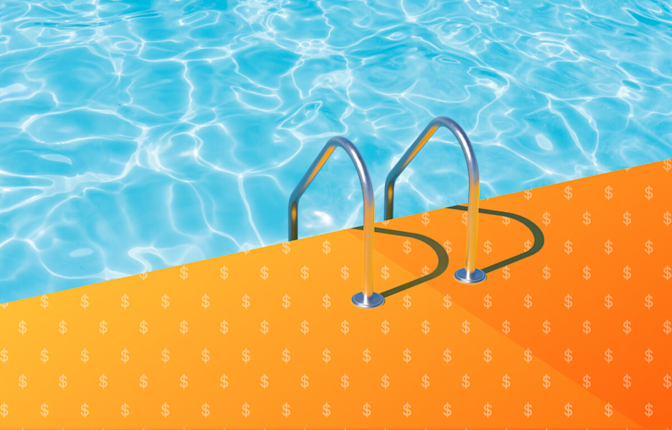Back

7 Steps to Buying a House in Australia
6 min read | 7 Jan 2022


Here are all the steps in buying a home – right from the initial planning to the official transfer of title.
Buying a home in Australia is no easy feat. Even once you’ve saved up the cash for a deposit, there’s still a lengthy series of administrative steps (and a small mountain of paperwork) to tackle before you can start moving in.
With a knowledge of everything involved, you can confidently take it on, one step at a time.
1. Know your budget
The home buying process starts with some honest self-reflection about your finances, both now and in the future. You’ll want to know roughly how much you can afford in monthly mortgage payments each month before you start looking at properties or speaking to lenders.
Start by calculating your monthly income salary after tax (or combined monthly salary after tax, if buying with a partner). Make sure to add any other sources of income, such as investments, to get an accurate picture of how much you earn on a monthly basis.
Next, subtract your average monthly expenses. If you want to be as accurate as possible, you can track your normal spending habits for a month first to get a sense of how much you spend.
Remember to leave out rental expenses, as this cash will go towards a mortgage if you proceed with buying a house. The amount left over is roughly how much you’ll have to put towards a home.
Remember. While budgeting gives you a ballpark figure based on your current financial situation, it’s important to plan for your financial future too.
Ask yourself:
How much you realistically expect to earn in the future, based on salary increases or career shifts
For how much longer you plan on working
How stable your income is (particularly if you are self-employed)
What future expenses you might also have to account for might come in (e.g. starting a family)
The more honest you are with yourself in the beginning, the less of an emotional rollercoaster the buying process will be. The last thing you want is to get attached to a dream home that turns out to be miles out of your price range.
2. Work out how much you can borrow
If you’ve found that you might need some help from a lender to purchase a property, you’re not alone! This is where borrowing power comes into play.
What exactly is borrowing power? Borrowing power is the loan amount that you can borrow, and it varies from lender to lender. Get a sense of what you can borrow by checking out a few different borrowing calculators (e.g. Athena’s borrowing power calculator estimates the total amount you can borrow, your repayments, and the property price you could afford). These figures aren’t official quotes, but they will give you an idea of your borrowing power.
Remember. In addition to monthly repayments, buying a home comes with other added expenses such as:
Stamp duty
Legal fees
Conveyancing fees
Council and utility rates
Strata fees
Home and contents insurance.
Keep these in mind too when considering how much you can put in, and how much you’ll need to borrow.
3. Choose a loan
Once you’ve received estimates of how much you can expect to borrow, it’s time to choose a loan and lender.
These days, homebuyers are spoilt for choice when it comes to loan options – so shop around for the best deals and don’t be afraid to push for more. You’ll save a fortune by not going straight to the big banks and shackling yourself to the first offer.
Home loans come in all shapes and sizes too, so it’s worth doing some research to find the features that best suit you.
For example, there are many added features such as:
Redraw and offset facilities allow you to pay extra on your regular payments, and then withdraw the surplus at a later date if you want.
Variable interest rates change with the market, so you can potentially take advantage of lower rates in future.
Fixed interest rates remain the same, so if your lender decides to increase their variable rate, your fixed rate will stay the same for the fixed period (usually 1-3 years).
AcceleRATES is an award-winning Athena-special feature that drops your rate based off how much you’ve paid so far. It’s based off three LVR (loan-to-value ratio) tiers. A loan-to-value ratio is the percentage of the total value of the property you’re borrowing. The more you pay down your loan, the lower the LVR ratio is.
If at this point your head starts to spin with all the extra fees, caveats, and complications traditional lenders like to throw at you - don’t despair. Yes, we might be biased, but it pays (literally) to go with a lender that bypasses profit-hungry banks and focuses on getting you the best deal possible.
Interested? Get a zero fee home loan that’s designed to disappear.
4. Get pre-approval
Pre-approval occurs when the lender agrees to give you a future loan, on certain terms.
Technically, you don’t need pre-approval, but it’s a wise choice. You’ll know exactly how much you have to work with when weighing up homes, and it also signals to real estate agents that you’re serious about buying,
As part of the pre-approval process, your bank will consider factors such as:
Your credit history
Any debts you have
Your salary, or how much you get paid and how often
Whether you’re taking on the loan solo or with a partner
How many dependants you have
Note: even with pre-approval, the lender can still choose not to proceed if the market or your financial circumstances change. Pre-approval can also expire if you don’t buy a house within 6-12 months.
5. Find the home for you
With pre-approval for a loan, you can officially start shopping! Choose a handful of suitable areas within budget and look at local real estate listings to get a sense of what’s on offer. You can also talk to real estate agents to let them know what you’re looking for.
Once you’ve found a home that seems to tick the boxes, inspect it thoroughly. The agent will present it in the best possible light during a viewing, but you’ll also want to look at what’s hiding in walls, floors, and ceilings.
This includes things like:
Electrical or plumbing issues
Foundational stability
Cracks
Damp and mould
Pests
Depending on the outcome of the building inspection, you might get some extra bargaining power when you make an offer. Or you might discover that it’s not worth it after all.
6. Make an offer
If everything checks out, it’s time to put some money on the table. Set your price with confidence, but leave some leeway to go up and down so you aren’t beaten by the next buyer who offers $1000 more.
If the property isn’t being auctioned, you’ll make a private sale offer to the real estate agent or seller. This could be verbal or drawn up by a solicitor/conveyancer if you’re using one. Aim a little lower than the listed price (a 5% drop is standard), and cite any issues noticed during the inspection to help you negotiate.
If you’re buying at auction, it’s simply a case of raising your hand and making a bid. Bids continue until the reserve price (the minimum the seller is willing to accept) is met, after which the property goes to the highest bidder.
If attending an auction, make sure you:
Secure pre approval for a loan beforehand, as your bid is binding
Inspect the property thoroughly. Unlike private sales, auctions aren’t followed by a cooling-off period that gives you a chance to look things over in detail.
Keep your cool and stick to your budget during the auction itself. Don’t get swept up and commit to something you can’t afford!
7. Start the conveyancing process
If your offer is accepted – congratulations!. You’re well on your way to new home ownership, but there’s still all the legal and administrative paperwork left to do before the property can be transferred to your name.
This is known as the conveyancing process.
We’ve stepped through the conveyancing detail here, but in short it involves:
Exchanging the contract of sale
Paying a deposit
Discharging the seller’s mortgage
Final inspections of the property
Adjustments for additional costs
Settlement
Once you’ve conquered the conveyancing paperwork, the property is officially yours. All that’s left to do is move in!
Read more: What is conveyancing, and how does it work?
You’ve got nothing to lose except your home loan!
Start saving a whole lotta time and money